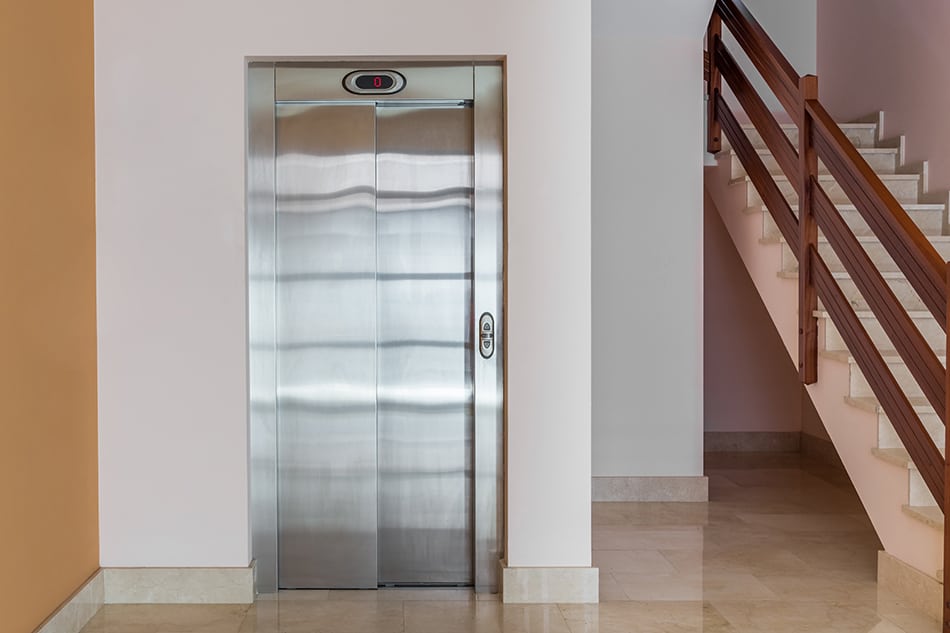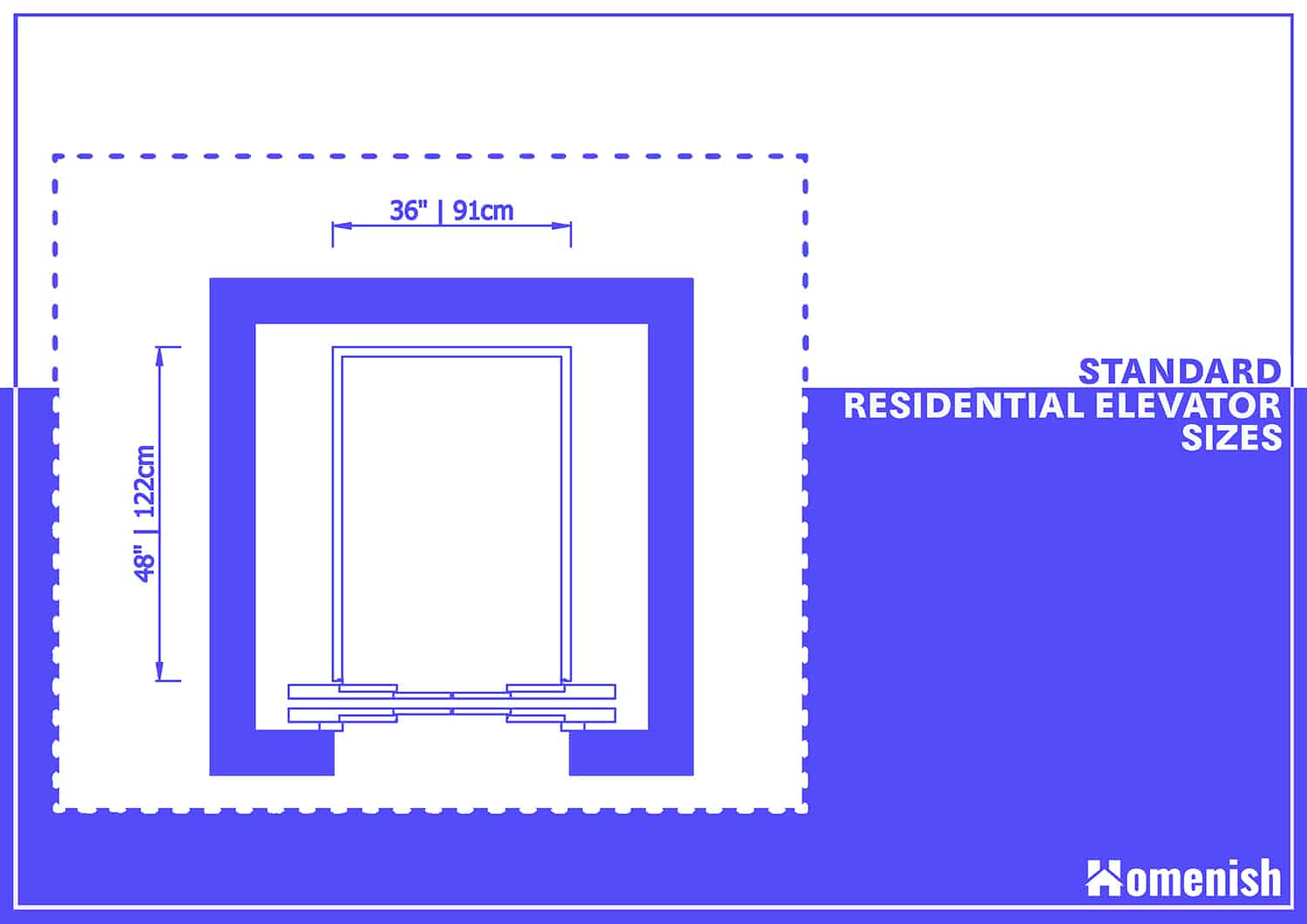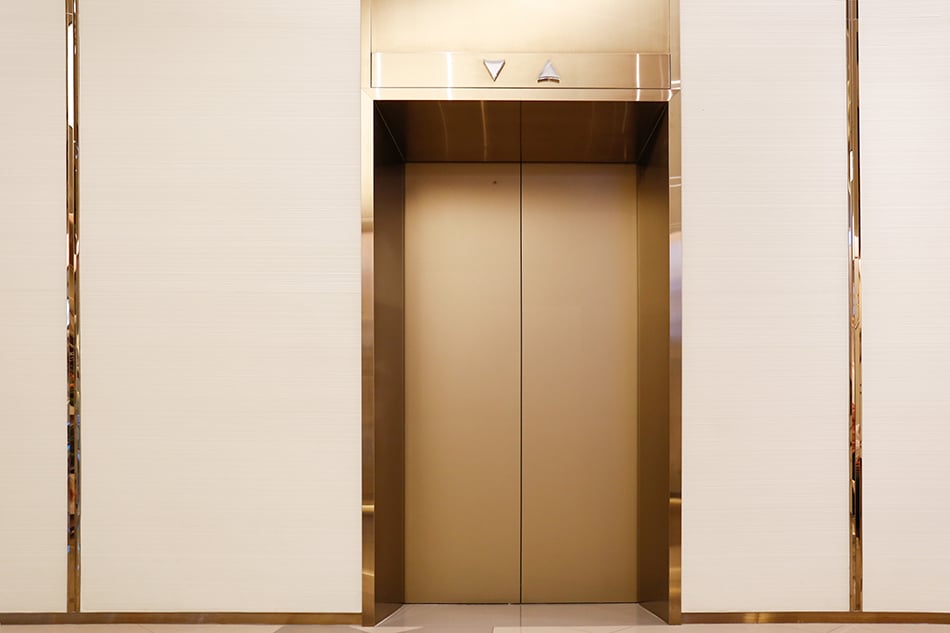An elevator is an integral part of any building, especially if it has many floors – this is when a traditional staircase option is not convenient for people to move up to higher floors.
However, installing an elevator in your building, whether it is residential or commercial, requires planning.
Additionally, you also need to know the regulations and mandated dimensions of this equipment. As such, knowing the standard elevator dimension is vital in the construction process. That way, you’ll be able to determine the right size and its load capacity. So, what are the standard elevator dimensions for residential and commercial buildings?
Here is a straightforward answer. You should also read the whole post for a detailed explanation.
- Standard Residential Elevator Sizes: 48 inches deep x 36 inches wide. And should not exceed 15 square feet.
- ADA-compliant Elevator Sizes: the minimum door width is 36 inches. The depth has to be at least 51 inches. And the width has to be at least 68 inches for a side door and 80 inches for a centered door.
- Commercial Elevator Sizes. Normally, a commercial elevator complies with ADA compliance. It has a minimum depth of 51 inches, and the minimum width should be 68 inches for a side door and 80 inches for a centered door.
Residential Elevator Sizes
Keep in mind that commercial elevators are not suitable for residential projects because they are bigger. Typically, a residential elevator floor area should not exceed 15 square feet. This figure is smaller than the average size of a commercial elevator, which is 22 square feet
In general, residential elevators are 48 inches deep x 36 inches wide. However, you can alter this number if you have ample space. However, you have to remember that there is a mandated maximum dimension set by the US regulations. To be specific, residential buildings or homes should not go beyond the maximum height of 84 inches.
Aside from that, the dimensions for the interior of the elevator can have a measurement of 38 inches x 48 inches, 36 inches x 60 inches, or 40 inches x 54 inches. Finally, the standard load capacity of residential elevators is 430 kg or 950 pounds, but smaller models with 750 load capacity are often used in a lot of residential settings.
Aside from those numbers, a residential elevator or home elevator should also have a minimum of one-foot-deep space under its lowest stop. Additionally, there should also be 12 inches of concrete under the elevator and in the drafting of its dimensions.
For the maximum stops allowed, a residential elevator should not have more than four stops when configuring its shaft dimensions. Additionally, there should also be 14 inches distance between each of the elevator stops. Lastly, the shaft’s configuration should also measure between 40 feet to 50 feet.
In general, the estimated cost of a residential elevator is around $20,000 to $30,000, while the installation cost will range between $40,000 to $45,000.
ADA-compliant Elevator Sizes
To comply with The American Disabilities Act (ADA) requirements, a residential elevator must have raised and Braille floor destinations, an inside and outside button with raised braille, call buttons, and verbal signals that indicate door directions. Finally, the elevator door should also remain open for at least three seconds.
Regarding sizes, according to ADA compliance, the door width has to be at least 36 inches, enough space for an elevator car to enter. The minimum depth is 51 inches. And the width has to be at least 68 inches for a side door and 80 inches for a centered door.
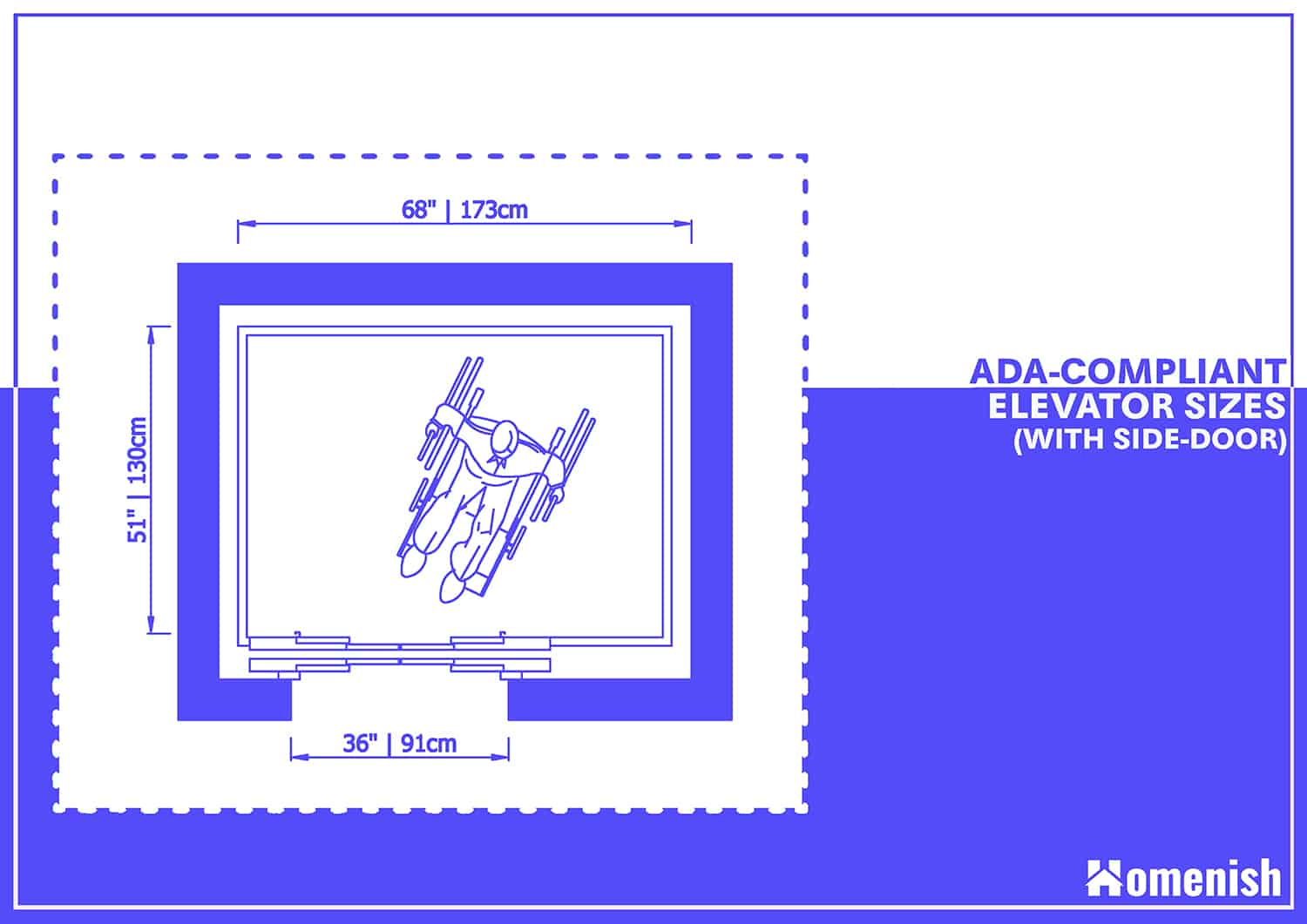
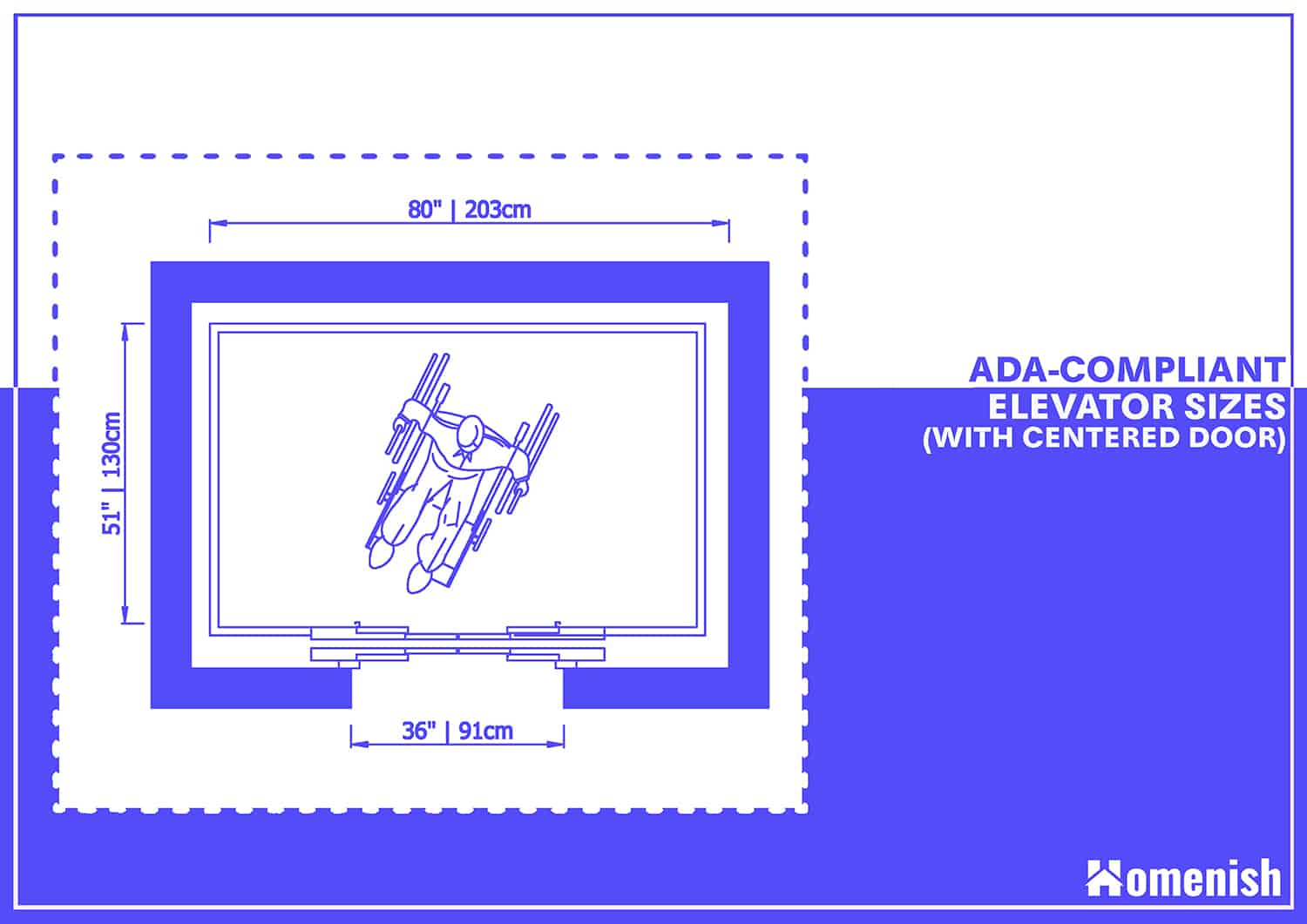
Commercial Elevator Sizes
Commercial elevators are bigger than residential elevators; thus, their dimensions are bigger. To be specific, the minimum depth of this type of elevator should be 51 inches, and the minimum width should be 68 inches. If the elevator has a center opening, the mandated minimum width is 80 inches. Also, commercial elevators have a load capacity ranging from 2,100 pounds to 5,000 pounds.
The standard inner dimension of commercial elevators is between 5 feet 8 inches x 4 feet 3 inches and 5 feet 8 inches x 7 feet 11 inches.
Compared to a residential elevator, the number of stops in a commercial elevator is not mandated. In fact, a new standard of elevator stops is set every time a newer and taller building is constructed.
Commercial elevators have the same ADA standards as residential elevators. For instance, they should have raised and Braille floor destinations, an inside and outside button with raised braille, call buttons, and verbal signals to indicate directions.
Plus, the door should be open for at least three seconds. The difference is that commercial elevators have additional requirements. To be specific, commercial buildings should install their elevators in a place where people can easily see and access them.
As for the cost, large commercial elevators have a price range of $75,000 to $150,000. Building with two to three floors can opt for smaller models with an estimated price of $20,000 to $28,000. The installation cost is the same as the elevator price.
What Elevator Size Do You Need for Your Building?
There are several factors you have to consider to determine the elevator size that you need. One, in particular, is the application. For example, you’ll need a larger elevator for an office building so that you can a large number of people will be accommodated. Residential buildings, on the other hand, can opt for a smaller elevator, depending on the number of people who will use it.
Aside from that, you should also know the elevator requirements in your state. Remember, each state has unique elevator codes that you should follow, including the dimensions. Plus, they will also help you determine the number of elevators required in your building.
Load Capacity
Once you’ve chosen an elevator size, it is vital that you understand its load capacity. That way, you can ensure that you won’t overload it. If you’re planning to load the elevator with heavy objects, it is best to opt for an elevator that can handle heavy loads.
Remember, a standard-sized residential elevator cabin can handle about 750 pounds to 1,000 pounds. So, if it will accommodate more than this specified weight, you have to consider a bigger elevator. Always remember that the elevator will last longer if you don’t abuse its weight-bearing capabilities; thus, you have to know and follow its weight capacity.
Conclusion
All in all, the standard dimension of a residential elevator is smaller than a commercial elevator. Even so, you can make changes depending on the application of the elevator. However, you have to follow the mandated elevator codes set by your state to ensure safety.
Also, you have to follow the ADA requirements so that people with disabilities can use the elevator with ease. Once you have determined the elevator size that you need, you have to understand its load capacity.
That way, you can prolong the life of the elevator by not abusing its weight-bearing capabilities. Plus, following the elevator’s load capacity will also ensure safety for the people who are going to use it.
